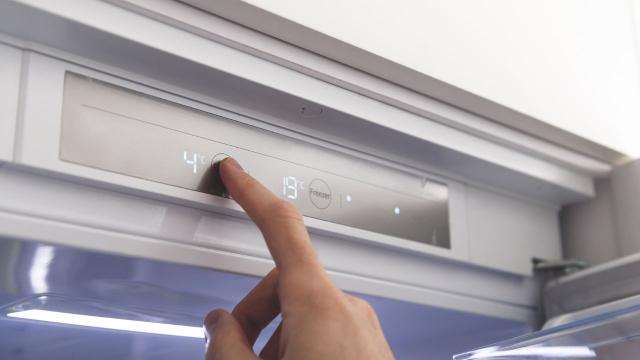Fridges are a staple appliance in pretty much every household, and luckily, they’re very self-sufficient. Rarely will you ever have to play with the settings on your refrigerator, but as we move into a change of season, you might be wondering – should you be changing the temperature on your fridge?
What should your refrigerator temperature be?
Before we even start thinking about changing your fridge temperature, let’s figure out what it should be set at normally.
According to CHOICE Australia, fresh food in your refrigerator should be kept at a temperature between 0 – 4°C. If your fridge has a chiller compartment, that should be kept close to 0°C.
If your fridge goes above 5°C then you run the risk of dangerous bacteria building on your food which could lead to food poisoning.
As for your freezer, this should be set to -18°C or colder.
Should you change the temp in summer or winter?
When we head into different seasons, like blistering hot days in summer or frosty nights in winter, it brings up the question of whether we should change our fridge temperature to allow for these more extreme circumstances.
Luckily, in Australia at least, even our extreme temperatures can be pretty mild in comparison to other places around the world. Most of the time, you won’t need to manually adjust your fridge in the summer or winter months, but it’s still worth keeping an eye on.
In summer, if you’re having a party that will cause your fridge door to be opened frequently, this could quickly cause the temperature in there to rise. Therefore, you may want to set it a few degrees colder to compensate and then switch back after the festivities are over.
Surprisingly, in winter, you might find your freezer actually getting warmer rather than colder. You don’t want your frozen items to thaw, so it’s worth keeping an eye on that temperature during the winter months.
If your fridge doesn’t have a temperature monitor built-in you can invest in a cheap fridge thermometer to keep track.
Now, if you’ll excuse me, I’m going to check my fridge’s temperature.

Leave a Reply
You must be logged in to post a comment.